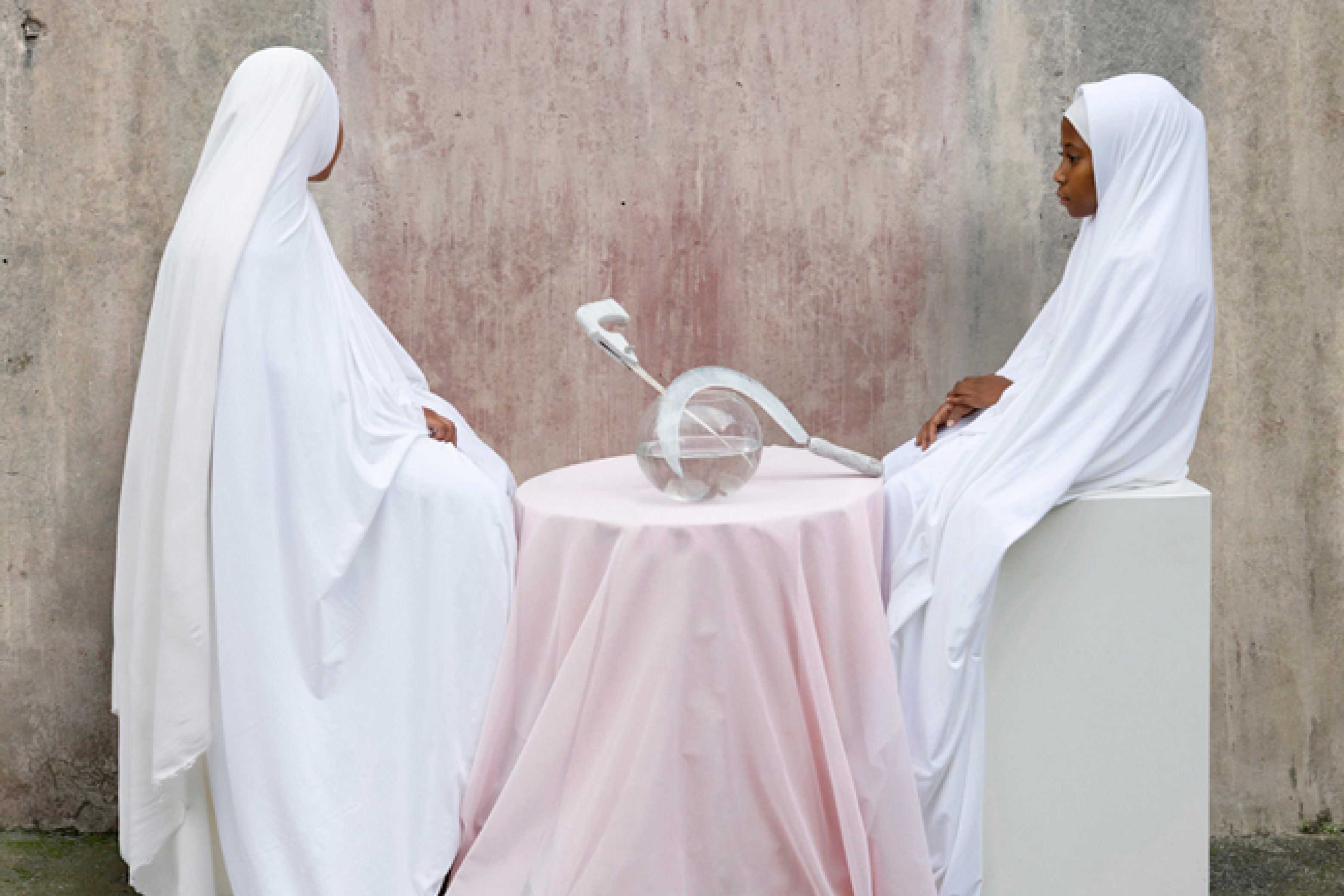Maïmouna Guerresi is an Italian artist who is currently based out of Senegal. She works in video, sculpture, photography and installation. Of all these, photography is her most important medium. While she is well known in some circles, she is exhibited infrequently, and in my opinion entirely underrated.
Mirrors, phantoms, light, hijabs, and labyrinths abound in the work of Guerresi. They are answering metaphors to the metaphysical question of spirituality. How can we present the unknowable and its followers? How can we come to terms with unjustifiable traditions?
Her photographs glisten with impossibility. She works in the space around illusion, only ever going so far as to allude to distortion. She is not a hokey opticalist, but someone who mixes translations, dreams, spirits and perspectives. Her works are an intimate look into mysticism of faith, and its links in infinite dimensions. Shadowy phantoms are the main feature of most of her works, often clothed in part by black holes or chasmic doorways. Striking reds and whites cut sharp lines in minimalist composition, all in an exploration of the relationship between humans and the cosmos. The images dilate and wobble, a mysterious blur of beginnings and endings.
She is too contemporary a figure to historicise as belonging to any one group. Suffice to say her work is contemporary, fabulist, and in my opinion positive in its universalism. Decadent costuming feels futuristic, yet takes such strong leave from traditional islamic and African embellishment that it is also firmly rooted in the past. Her photos form a set of shimmering parenthesis around tradition and possibility. Formally, I think things nod to David Hockney. There is a consistent play of planes and perspective within her work, translated first or most notably from painting to photography by Hockney in the 1980s. We see this boldly in works such as ‘Little White House’ and ‘The Virgin of the Little White House’, both of 2004. The spatial ambiguities are certainly similar to most early Hockney figure paintings. The line drawn structure is lifted almost directly from his ‘Self-portrait with Blue guitar’ of 1977.
Guerresi is also prone to dissecting her canvases into many parts. With all her spiritual ornamentation, it might be tempting to associate this with Christian di- or tripytychs. However again I see it as more in line with Hockney’s play of uneven picture planes and spatial formatting. Look at her ‘Students and Teacher’ 2012. It might not resemble Hockney’s truly disjointed photography, but it does recall his larger segmented paintings. The flat geometry of the whole exercise is also reminiscent of his LA works, such as ‘The Splash’. Lastly, and most glaringly, she repeats the motif of the dining table, central to Hockey’s work, even if a symbolic central flat plane. Look into ‘M-eating and The Light Salt’ from 2013, and see how the table cuts through the horizontal plane like ‘Still Life On a Glass Table’, 1977 or ‘Portrait of an Artist (Pool with Two Figures)’, 1971. Perhaps I am wrong, but I don’t think so.
Being of the Islamic faith, Guerresi attracts much political attention, which often overshadows her aesthetic power. Feature after feature attempts to contextualise her work as at the forefront of an Islamic polemic, and takes very little time to appreciate the artfulness of it all. In fact, Guerresi is no polemicist, and her art has no real political force to it. In fact she is interested in proclaiming the mysteries aroused by faith and tradition. To debase aesthetics in favour of some nationalistic, ethnic or religious cause does no service to a true heir of Borges, Neruda and Cleopatra. When Maïmouna Guerresi is discussed, her art is not. In this way she is both overlooked and under-appreciated.
Words by Simrin Panag
This article first appeared in print volume 88 edition 2 STOP

